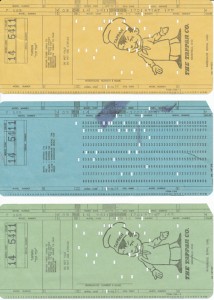I’ve been destroying aircraft lately. Soon I’ll destroy more. It’s sad work. But sometimes you just need to detach and get the job done. Let me explain.
My Dad has been a model aircraft enthusiast since he was a boy. (He holds a 5-digit AMA number!) Control lines were the technology of the day but he went to radio controlled modeling when I was very young. From there he moved to electric-powered aircraft. He designed and built much of his own equipment for forming airfoils and other related tasks. He was quite the expert at the time and held membership with several local clubs. I can recall coaching him as he began to learn to speak before groups effectively, in order to share his knowledge with others.
That was then and this is now. My Dad’s heath hasn’t been good for quite a few years. Nearly all of what he used to do is simply no longer done. But his home and its outbuildings are still fairly overflowing with the results of a lifetime of prolific modelbuilding.
And presently Dad’s garage is falling apart. Years of no maintenance will do that to any structure and it seems unlikely to survive the inevitable winter snow load. At its prime the structure housed a complete wood shop and a damned respectable metal shop, but years of neglect and disuse have taken their toll. Every inch of free space is full of aircraft in various stages of repair, from not yet built to under construction to ready to fly to crash victim – and everything in between. This is the result of uncountable tens of thousands of hours of Dad’s work.
I’ve taken on the task of helping Dad with the problem. The plan, in a nutshell, is to separate the good from the trash, seeing to the good disposition of the former and the carting off of the latter. It’s a pre-emptive move: if the structure falls during a storm then the good stuff – along with everything else – becomes backhoe and dumpster fodder. What a tragedy that would be!
Officers of one of Dad’s clubs, the Somerset Signal Senders, have been helping me with the aircraft. I simply don’t know enough to decide what’s useful and what’s not. You see, exactly like anything else that technology touches, the state of the art of modeling has advanced by leaps and bounds. What used to take several square inches of circuitry now takes a thumbnail. Power storage densities have increased by an order of magnitude or more. Noise and other regulatory concerns have become issues. And so on. The club has been very helpful. And Dad’s donation of dozens and dozens of airframes, most complete with motors and electronics, will provide the club’s members with many hours of enjoyment. I’m told that many will see the air again! Others will provide examples of yesterday’s technology and techniques. It’s all good stuff.
And that brings us around to where we began today’s entry.
Smash! Crash! Thud! The sledgehammer falls again and again.
This is the sad work that Dad cannot see. It would break his heart. Despite best efforts, there are still plenty of airframe pieces that will have no future. A broken or orphaned wing. An unmatched or damaged fuselage. They occupy space needed for the work ahead. They have to go.
There’s silence for a while as I wield the tools to remove a radio, a servo or two or three, motors and/or engines. Some will find new life, I’m thinking, as donations to the local schools’ robotics classes. Or maybe I’m stuffing the compacted debris into bags for disposal.
Crash! Splinter! Rip! The sounds of destruction, of the necessary compaction, continue. I think of the past, the hours spent in creation and construction. I think, too, of the future. A future that will arrive just as surely as the sun rises. A future when today’s work will surely seem easy by comparison. I lift the sledgehammer’s handle again and allow gravity carry it downward.

